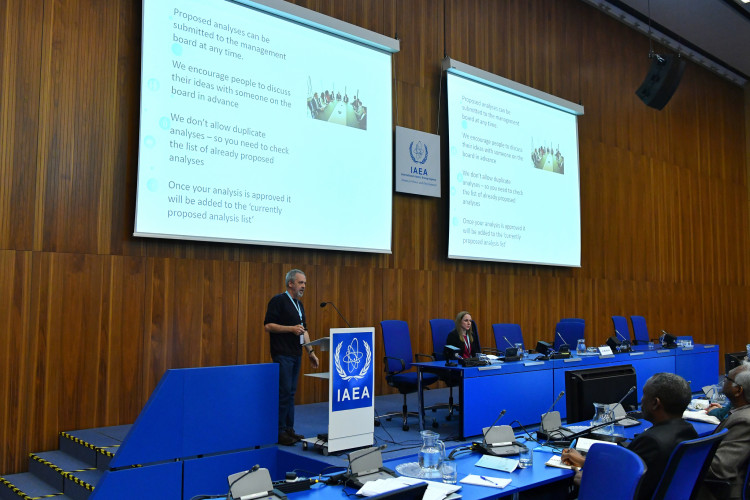The International Atomic Energy Agency (IAEA) this week launched a database aimed at helping countries devise better health policies to combat a growing obesity epidemic worldwide. The IAEA database contains human energy expenditure measurements from the last three decades collected using a stable isotope technique, and will help researchers look at the impact of growing sedentary lifestyles on dietary needs.
Energy expenditure measurements are used to determine the amount of food, or calories, a person needs to function. “The intake of energy through food should equal the output in energy expenditure, as unequal levels can quickly lead to overweight and obesity, or under nutrition,” said Alexia Alford, Nutrition Specialist at the IAEA.
According to the World Health Organization (WHO), worldwide obesity has nearly tripled since 1975. The 2018 Global Nutrition Report stressed that, while stunting in children is declining, overweight and obesity continued to rise, with 48% of overweight children under five years old now living in low-income and lower-middle-income countries.
“Measuring energy expenditure is important because it sits at the heart of many important processes and has been suggested to be a major aspect of obesity risk,” said John Speakman, professor at the Chinese Academy of Sciences who helped develop the database. “It drives how much we eat, and hence what levels of food supply we need.”
The IAEA DLW database contains over 6,600 measurements from 23 countries collected using the Doubly Labelled Water method between 1981 and 2017. “Doubly Labelled Water is the only technique that enables the assessment of energy expenditure in a normal, daily-living setting, so it’s a very important method in understanding energy demands,” Alford said.
This nuclear technique uses water with the added stable isotopes deuterium and oxygen-18 to measure a person’s energy expenditure – or calories burned. After a person drinks a dose of Doubly Labelled Water, he or she goes back to regular activities. Most commonly, urine samples are taken over a 10-14 day period to measure the rate the two isotopes leave the body. The elimination rate of these isotopes is used to calculate carbon dioxide production, which is related to energy expenditure.
This method can be costly to apply to large populations, so studies have tended to be small. “By pooling measurements from many studies, we hope to generate a database that will be able to answer questions that single studies alone cannot,” Speakman said. “There are a whole range of questions that we hope the database will answer,” he added. These include how energy demands change over the lifetime of a person, how these demands differ between sexes and ethnic backgrounds, and “whether energy expenditure has really declined over the time course of the obesity epidemic.”
The database currently contains measurements mostly from high-income countries, but is open for contributions from all countries that have collected Doubly Labelled Water data.
Nuclear techniques, such as the Doubly Labelled Water technique, are useful tools in understanding body composition, energy expenditure and nutritional needs to help countries plan appropriate health policies. This week the IAEA is holding a Symposium on Understanding the Double Burden of Malnutrition for Effective Interventions in cooperation with the WHO and United Nations Children's Fund (UNICEF).


